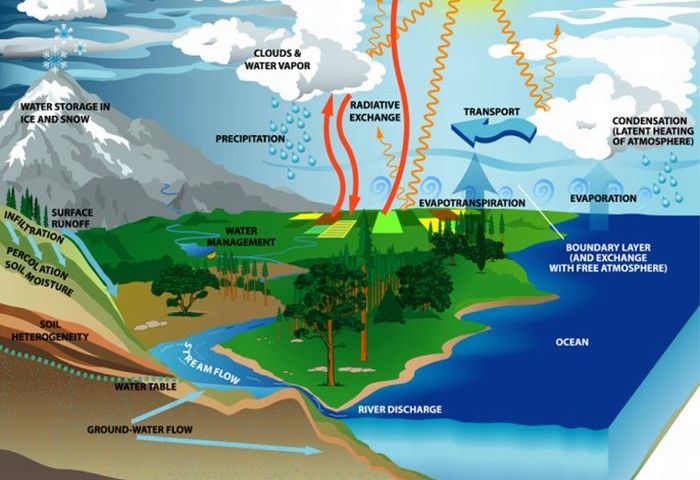Last week’s Van Tuyl lecture was oddly appropriate, given the brief overnight snowstorm preceding it. Dr. Mark Williams of the University of Colorado at Boulder dispelled some commonly held beliefs about mountains while reinforcing some vital environmental facts in his lecture titled “Teflon Basins and the Role of Groundwater in Seasonally Snow-Covered Basins in Response to Changes in Climate.”
Williams’ work is important due to the advantages that snow and mountains have when it comes to water release over time. Especially in the Colorado Front Range, snow-based run-off plays a key role in water supply. Many towns and cities draw their water from upstream areas to avoid water pollution. “Snow is much more available for run-off [than rain] because it acts as a bank,” stated Williams. Since the snow begins to melt as spring comes, the water coming down the mountains is perfectly timed to water the plants downstream. Since it takes time for the snow to melt, ensuring a steady supply of water throughout the growing season.
One of the commonly held beliefs about mountains is that they serve a function as pseudo-water towers. Williams and his colleagues decided to analyze this idea to see if it was true. Unlike lower elevations, where a majority of water is lost to plant life and evaporative transpiration, the high mountains lack the large trees that are a main source of water loss. Mountains also generally serve as the starting points for larger aquifers down slope and thus can store water in that way. It had been predicted by some that the conventional evaporation rates would be high, defeating the mountains as water towers idea. Through careful analysis of oxygen isotopes, though, these predictions were shown to be wrong. While there is still incredible interaction at lower elevations, “It’s true, mountains are water towers,” Williams concluded triumphantly.
Over the last few years, the bulk of Williams’ work has been dedicated to focusing on to what extent the mountainous areas can hold water over longer periods of time. Williams work originally assumed that there was very little groundwater storage, a situation know as a Teflon Basin. “Snow melts and it runs in the stream. There is no holding time for the water,” explained Williams.
In order to test his original hypothesis, Williams started work at several sites west of Boulder. The sites, especially his Green Lake four site, have the distinction of being some of the longest running mountain testing sites in the world, which provided Williams and his team with the long range data that they needed to see the reality behind mountains and their water holding capacity. A surprise came with a basic isotopic analysis of the water coming out of the system. If the system was a Teflon basin, the team would expect to find there to be little “old water.” What they found instead was that around 64% of the water was “old.” As the team looked closer, they realized what was really happening. “If there is a place for the snow to infiltrate, it will do it,” said Williams, “New water will try to push out the old water.” In the high mountain areas, the ground is deceptively porous, especially in the Rocky Mountains where the ground is highly fractured.
At the Martinelli Catchment, the team found another surprise that will warrant more refined studies in the future. Unlike the Green Lake site, the Martinelli Catchment can have up to 15 meters of snow pack. It was expected that due to this, the water would be much more dominated by snow melt than baseflow or other forms of groundwater. What they found was that there was still a large amount of ground water flow, but more interesting, the snow acted as a filter for itself. It was determined that as a snow particle melts, it falls through the column of snow, and the individual drops freeze. In response, other snow particles melt, causing a minor cascade effect. Certain isotopes of the oxygen within the water freeze more readily than others so that by the end, the water reaching the streams was of a much different composition than that which had previously fallen.
Williams’ final point was focused much more on the effects of climate change on the water cycle in the mountains. It was expected that when the areas went through a period of drought the amount of water coming down from the mountains would be significantly less. While this was true for water supplies such as immediate run-off, the flow volume for what was termed baseflow actually increased. Though he himself had not determined the answer, Williams closed the presentation with, “I’ll leave you here with this question: what is the baseflow?”



'A chilling new look at the impact of snow on mountain hydrology' has no comments
Be the first to comment this post!